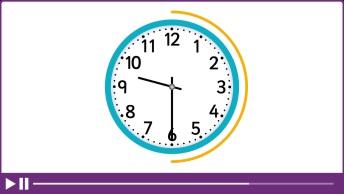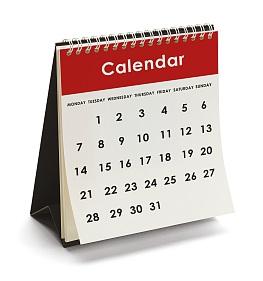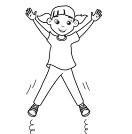Teacher’s Pack





Teacher’sPlanningBook





Teacher’sResource Book


FirstClass Teacher’sPlanningBook

FirstClass Teacher’sResourcesBook
FirstClass
Teacher’s Pack








Teacher’sPlanningBook





Teacher’sResource Book


FirstClass Teacher’sPlanningBook

FirstClass Teacher’sResourcesBook
FirstClass
Teacher’s Pack




Notetoteachers: Thecontentsshownindicatewhatisincludedinthissampleextract. While we have combinedthe resourcesintoasinglebooklethere,therewillbetwoseparate booksprovidedtoteacherswhoadopttheprogramme–a Teacher’s PlanningBookanda

ThePrimaryMathematicsCurriculum(PMC)hasfive Strands,whichare dividedinto StrandUnits:
Algebra DataandChanceMeasuresNumber ShapeandSpace
● Patterns, Rulesand Relationships
● Expressionsand Equations
● Data
● Chance
● Measuring
● Time
● Money
● UsesofNumber
● Numerationand Counting
● Place Valueand Base Ten
● Setsand Operations
● Fractions
● Spatial Awarenessand Location
● Shape
● Transformation
In MathsandMe,thecontentofeachunitisclearlyconnectedtooneormoreofthe Strands and StrandUnits.
EachoftheStrandUnitscontainsasetofLearningOutcomes.Learningoutcomesareusedtodescribethe expectedmathematicallearninganddevelopment foralllearnersattheendofatwo-yearstage,whendue accountistakenofindividualabilitiesandvaryingcircumstances.
Eachofthelearningoutcomesbeginswiththestem,‘Throughappropriatelyplayfulandengaginglearning experiences,childrenshouldbeableto...’Thisstememphasisestheimportanceofprovidingrichand engaginglearningexperiences.
In MathsandMe alllearningoutcomesarecoveredindepth.Theprogrammehasbeendesignedto includeawide rangeofrich,appropriatelyplayfulandengagingactivitiesandtasks,whichdemonstrate keypedagogicalpractices,andsupportchildrentowardsachievingthelearningoutcomesanddeveloping theirmathematicalproficiency.
The PMCissupported by thePrimaryMathematics Toolkit,whichincludestheProgressionContinua.The progressioncontinuaoutlineasamplelearningtrajectoryofMathematicsatprimarylevel.Theysuggest aseriesof learningexperiences whichchildrenmightengagewithastheydevelopanddeepentheir mathematicalknowledge,skillsanddispositions.Eachcontinuumdescribesthelearningjourneyacrosseleven ProgressionMilestones(a–k)intermsofmathematicalcontent(StrandUnits)andprocesses(Elements).
Takingintoconsiderationtheelevenprogressionmilestones(a–k),thevariousclasslevelsof MathsandMe have beendevelopedaroundcertainmilestones:
JuniorInfants ProgressionMilestonesbandc
SeniorInfants ProgressionMilestonescandd
FirstClass ProgressionMilestonee
SecondClass ProgressionMilestonef
Table2: MathsandMe ClassLevelsandtheProgressionContinua
Thatsaid, MathsandMe recognisesthatchildrenlearnanddevelopatdifferent rates.Therefore,whilethe contentoftheFirstClassbook, forexample,centresaroundsuggestedlearningfromProgressionMilestone e,itisalsoinfluenced by thestatementsinProgressionMilestonesdand f, tocater fortheneedsofallthe children. Teachersare recommendedtoexerciseprofessionaljudgementwhenmakingdecisionsastothe learningactivitiesandtaskswhicharemostappropriate forthechildrenintheirclassroom,andtoadapt accordingly.
ThePrimaryMathematics Toolkitoutlinesmathematicalconcepts.Theseareconsideredtobethe keyideas thatunderpineachlearningoutcome.Itisenvisagedthatchildrenwilldeveloptheirunderstandingofthese conceptsthroughengagingwiththemathematicalprocesses,asoutlinedintheelements.
In MathsandMe,mathematicalconceptsinformthedesignofunits,includingthemathslanguageto focus on,andinfluencetheprogressionofcontentfromoneclasstoanother.
A FocusofLearningidentifiesthepurposeofalessonand/ortheintendedlearningthatwilltakeplace.
In MathsandMe,the FocusofLearningineachlessonechoesthesuggestedlearningexperienceslisted intheprogressioncontinua,i.e.each focusoflearningiseitheranexact replicaofastatement,oris derivedfromoneormorestatements.
The focusoflearningisalsoconnectedtooneofthe fourelementsusingtheabbreviatedtitles.
Day9,Lesson7
Focusoflearning(withElements)
● Makesapproximationsofthepresenttimeorthetimeshownonanalogueclocksusingappropriate language (C)
● Establishesandmakes reasonableestimationsandmeasuresoftime(R)
Digitalactivity:WhatTimeIsIt?(2) MAM Routine:QuickImages with Write-Hide-Show
Digitalactivity:Cinderella’sClock MAM Routine: Reason& Respond with Write-Hide-Show
PCMXX– TellingTimeLanguageCards MAM Routine: Reason & Respond
Pupil’sBookpage37:EstimatingTime
Childrendeveloptheirmathsskillsthroughprocessessuch asconnecting,communicating, reasoning,argumentation, justifying, representing,problem-solving,andgeneralising.The PMC(2023)uses fourelementstodefinetheseprocesses,and tocategorisethesuggestedlearningexperiencesgiveninthe progressioncontinua.
The PMCadvocatesthatteachers providechildrenwithrichmathematical learningexperiencesthatareplayfuland engaging,that reflect relevantpedagogical approachesandthatprovideopportunities forchildrentocollaborate,communicate mathematicalthinking,andexpresstheir understandinginmultiplewaysandin variouscontexts.
Table3:An overviewofelementsandabbreviations
Inlinewiththelearningoutcomes, mathematicalconceptsandsuggested learningexperiencesintheprogression continua, MathsandMe providesawide rangeofrichandmeaningfullearning experiences foreachlesson.Manyof thesearedesignedaroundthe Maths andMe Routines.
In MathsandMe,the focusoflearningineachlessonisclearly connectedtooneoftheseelementsusingtheabbreviated title(seesecondcolumnof Table3).Andwhilethe focusof learningmayincorporatemorethanoneofthesecentral processes,itisthemostprominentelementthatisgiven.
MathsandMe Routines areacollectionofplayful,engagingandinclusiveinteractionsthatpromote mathematicaltalk,thinkingandmodelingamongallchildren.These repeatable routineshave beenchosen astheyareproventoactivatepriorknowledge, fosterproductivedispositionsandprovidevaluable formativeassessmentopportunities forteachers.
Inadditiontosupportingthefive keypedagogicalpractices,whichwillbedescribedindetailinthenext section,the routinesalsosupport formativeassessmentandinclusivepracticesasdemonstratedin Table4.
Doesitsupport/promote…?
Sometimes,Never; TargetBoards
Chapter6ofthe PMCdescribesfive keypedagogicalpractices.Thesepracticesareacknowledgedasessential totheprovisionofqualitymathematicallearningexperiences.
The PMCemphasisesthat‘Dispositionsarenotstaticandcanbenurturedorchanged overtime’andacknowledgesthat‘attitudestomathematicsandvalues,bothathome andintheclassroom,alsohave astrongimpactonthedevelopmentofthechild’s productivedisposition formathematics’(p.28).
Thefundamentalaimof MathsandMe is forthechildtocometoappreciatemathsassomething thatispositiveand relevanttothem.Ifthishappens,itismorelikelythattheywillengagewithmaths inameaningfulway. Thisseriesaimstoachievethis by:
● Highlightingthe worldofmathsaroundthechildren −intheirschools,intheirhomes,intheirlives
● Using real-lifeexamples ofmathsinactionandsituationsthatchildrencareabouttomakemaths meaningfuland relevant
● Actively encouragingthepositiveinvolvementof families intheirchild’slearningandmathematical experiences
● Incorporatingfunandentertainingactivities,includingplay, role-playscenariosandengaginggamesto boostenjoymentwhilealso emphasisingcollaborativetasks overindividual work
● Includingtasksthatencourage activeparticipation,exploration,investigation,productivestruggle, risk-taking,creativestrategiesandperseverance,whichwill resultin asenseofpersonalsatisfaction intheiraccomplishments
● Providing scaffolding,encouragementandsupport,includingtimetothinkand reflect
● Enabling childagencyandthechild’s voice.
The PMCstatesthat‘MathematicalModelinginvolvesusingmathematicstodescribea problem-contextanddeterminemeaningfulsolutionstotheproblem.In formingmodels, childrenmightusephysicalactions,spoken words,objects,images(e.g.graphs,diagrams andpictures),symbolsorwritten words’(p.30).
MathsandMe enablesmathematicalmodelinginmanyways:
● Emphasisingthe importanceofthinkingtime toallowthechildrentomakesenseoftheirthinking
● Using speciallychosenquestionsandtasks toencouragethechildrentomodelmathematically
● Presentingmathsconceptsinmultipleways and/orusingmultiplevisual representationstointroduce thechildrentoawidervarietyofmodelsthantheymighthave encounteredorcreatediflefttotheir owndevices
● Encouragingthechildren tobeindividualandunique inhowthey expressand representtheirideasandthinking
● Promptingthechildrento challengeandtesttheir ownthinking andmodels,and thoseofothers
● Encouragingtheuseof physicalmodels (classroommaterialsandmanipulatives) tosupportmathematicalmodelingintheclassroom,andincluding representationsoftheseintheprintanddigitalmaterials
● Usingavarietyof conceptualandproceduralmodels todemonstratedifferent approachesandstrategiesandencouragechildrentodeveloptheir ownmodels anduniquewaystoapproachcomputationsandtasks.
The PMCdescribesCognitivelyChallenging Tasks (CCTs)as‘richhigher-orderlearning opportunitiesthatshouldappropriatelystretchandchallengechildren’sconceptual understandingastheyencountersignificantmathematicalideasandsituations. Sometimes referredtoas low-thresholdhigh-ceilingtasks,thesetasksshouldprovide allchildrenwiththeopportunitytoaccessmathematics,whileofferingthepotential for deeperengagement’(p.31).
MathsandMe facilitatesCCTsintheclassroom by:
● Incorporatingchallengeslinkedtochildren’scurrentlevelofknowledgeandunderstanding,while providinganappropriatestretch
● Providingtaskswherethesolutionpathwayisnotimmediatelyobvioustothelearnerorwherethe solutionisnot reducedtoasetofstepsandprocedures
● Facilitatingchildrentocommunicateandexpresstheirideasopenly,allowingthemtodiscuss,compare, justifyandevaluatetheirideasorsolutions.
CCTshave beenincorporatedthroughouttheprogrammeanditscomponents.
The PMCdescribesMaths Talkas‘acollaborativeprocesswherechildren’sthinking, strategiesandideasarediscussed,sharedand/orexchanged.Thisallowschildrento reflectontheir ownunderstanding;define,presentandjustifytheirideas;makesenseof andcritiquetheir ownideasandthoseofothers;anddeveloptheirabilitytoexpressand articulatetheirthinking’(p.32).
Ineverylesson, MathsandMe providesideas forMaths Talkactivities,whichbeginwithappropriately challengingandengagingtasks.Bytheir verynaturetheseMaths Talkactivitiesalsoproviderichassessment opportunities,i.e.elicitingcurrentknowledgeandunderstanding,identifyingemergingconcepts.These activitiesemphasisetheprobingand responsiveaspectsofMaths Talk.Allofthe MathsandMe Routines promoteand fosterMaths Talk.Theuseofthese routinessupportsacultureof respectandrisk-taking,where children feelsafetosharetheirthinkingandareencouragedtolistentoandvaluetheideasofothers.
The PMCstatesthat‘Mathematicallearningcanbegreatlyenhancedinaplayenvironment thatisinteractive,engaging,inclusiveandsupportive;andthatprovidesopportunities for exploration,investigation,challenge,creativity,choiceandindependence.Playprovides acontext formathematicalthinkingandthedevelopmentofmathematicallanguageand concepts,withclearpotential forpromotingmathstalk’(p.29).
MathsandMe encouragesplayfulness by:
● Tappingintochildren’sinterestsandcuriositiesthroughengagingthemesand real-lifecontexts
● Suggestingideasandwaystointegratemathematicallearningwithplayfulactivitiesthroughouttheday
● Facilitatingmultiplemeansofexpressionand representation
● Providingopportunities forchildrentoexploreandexperimentwithmathematicalideas
● Fosteringthecreationofasafespace forspontaneity,creativityandimaginativeplaywithmathematics
● Providingaccesstoawide rangeof resources,visualsupportsanddigital resources.
The PMCexplainsthat ‘Assessmentisanintegralpartoflearningandteaching.Itinvolvesteachersand children workingtogethertouseinformationtoinformandsupportlearningandteaching’(p.34).The PMC advocatesthreetypesofassessmentasbeingnecessary‘togainacomprehensivepictureofachild’sprogress andachievement’(p.35).Theseare:
● Intuitiveassessment:Unplanned,unrecorded,andongoing
● Plannedinteractions:Morevisible,maybe recorded,and relatedtolearningoutcomes/competencies
● Assessmentevents:Distinct,visible, recordedevents.
Assessmentisintegratedthroughout MathsandMe.Thelearningexperiencesarestructuredinsuch awaythattheysimultaneouslypromotethedevelopmentofmathsskillsandfluency,andenablethe teachertogather, record,interpret,useand reportinformationaboutachild’sprogressandachievements. Theteachercanthen respondtotheinsightsgatheredfromtheassessmentsandadjusttheirteaching accordingly.
Theprogrammesupportsthethreetypesofassessmentoutlinedinthe PMCinthe followingways:
Intuitiveassessment
● Unitplansprovide comprehensivebackground andrationale information forteachersonallthetopics covered,alongwith guidance andsupportsaroundcommon misconceptions,thus increasingteacherawareness andpreparednesstoobserve and respondtopupils.
Plannedinteractions
● Lessonsaredesignedaround richlearningexperiences linkedtothe focusoflearning andlearningoutcomes.
● Lessonsuseanumberof MathsandMe Routineswhich posequestionsdesigned tostimulateclassroom conversations andtoscaffold learning.The regularityof theseensurethey become familiar,recognisable assessmentopportunities
● Eachlessonplanhighlightsthe learningexperiencebest suitedtogenerating recordableassessmentdata
● Pupil’sBooktasks provide furtherassessmentdata,as doesthe self-assessment feature.
● Mathsjournalling opportunitiesareoutlinedin thelessons.
● Eachunitcomeswitha FormativeAssessment ObservationsSheet for teachers.
Assessmentevents
● The ProgressAssessment Booklet providescheckupquestionslinkedtothe learningoutcomesofeach unit.Thesequestionscanbe usedasaplannedassessment and administeredasa traditionaltest,orusedasthe basisof agrouporwholeclass quiz.
● A comprehensiverecord sheet enableseasyanalysisof assessmentdataatindividual, groupandclasslevel.
Thisguidewillwalk youthroughtheprogramme’s keycomponents,highlightingitsstructure,integrated approach,easeofuse,andthechoicesitofferstobothteachersandchildren.
The MathsandMe yearly overviewisdividedintomonths,thensubdividedinto units.Eachunitiseitheroneortwo weekslongandcoversaspecificareaof learning.Thecontentofeachunitisclearlyconnectedtooneormoreofthe StrandsandStrandUnits.
Review Weeksarealsoincludedinthe yearly overview,providing regular opportunities forchildrento reviewand reflectontheirlearning.
Unitsarethebuildingblocksof MathsandMe.Eachunitisbrokendownintoa numberoflessonplans,and followsasimilarstructure.Theinitiallessonactivates andassesseschildren’spriorknowledge,thesubsequentlessonsdevelopand progressthelearning,whilethefinallessonofeachunitprovidesavaluable opportunityto reviewand reflectviaamenuofoptions.
Let’sStrengthensuggestionsandmaterialprovidesadditionalsupporttochildren,whileLet’sDeepen suggestionsandmaterialprovideadditionalchallengeandextensionopportunities.
● Developsandprogresses thelearning
● Providesopportunities toreviewandreflecton learning FormativeAssessment
Eachlessonalso followsaclearstructure,whichisstraightforwardandeasyto follow, andprovidesflexibility andchoice forteachers.
Eachlessonstartswithwarm-upsuggestionstogetthechildren readytolearn. Theyaretypicallywhole-classactivities,whosepurposemightbeto:
● Provideanintroductiontothemainlesson
● Revisitconceptsthatthecurrentlessonwillbuildupon
● Reviewcontentcoveredpreviously.
Mainevent
Themainpartofthelessonincludesanumberoftasks,throughwhichthe childrenwillachievethe focusoflearning forthelesson.
Thesetasksmaybeconcreteactivities C ,digitalactivities D oractivitiesbased onprinted resources P
Somepointstonoteabout MathsandMe lessons:
● Emphasisonplayfulandengaginglearningexperiences
● Useofdigital resourcestoenhancethelearning
● Useof MathsandMe Routines:see At-A-GlanceGuide
● Support foralllearnersthroughLet’sStrengthenandLet’sDeepen features
● Formativeassessmentopportunitiesthroughout.
Optionalconsolidationandextensionopportunities
Eachlessonendswithachoiceoffurtherlearningexperiencestoconsolidateandextendthechildren’slearning.
To supportteachersinimplementingthe PMC,thecomponentsof MathsandMe have beendevisedtoserve variouspurposesandenhancetheteachingandlearningofmathsintheclassroom,widerschoolandhome environments.
Pupil’sBook
The MathsandMe Pupil’sBookisdesigned foruseafterengagementwith thelearningexperiencesoutlinedinthelessonplans.Itspurposeistwofold: toprovideanopportunitytoconsolidatethenewlearning,andtoprovidea recordofchildren’s work.
The following featuresareincluded:
● TryThis:providesoptional,cognitivelychallengingtasks forpupils
● Let’sPlay:incorporatesplayfulnessintomathsthroughengaginggames andinteractiveactivities
● MathsEyes:encourageschildrentolookaroundthemand recognise mathsinthe real world.
● Let’s Talk:providesopportunities forchildrentosharetheirstrategiesand ideas
● Let’sInvestigate:encourageschildrentodevelopcreativestrategies throughactiveparticipationandexploration.


ThePupil’sBookalsocomeswiththe followingadditional resourcestosupportlearning:a MWBwithan opennumberlinetemplate,adoubletenframe,achoiceoftwospinners forusewithgamesandplace valuearrow cards.
The MathsandMe Home/SchoolLinksBook recognisestheimportanceofthe familyinthechild’slearning.Includedinthebookare‘Dear Family’notes for eachunit,whichprovidetipsonhowtosupportthechild,practicalactivitiesto becompletedathome,andQRcodesthatlinktodigital resourcessuitable for homeuse.Theactivitiesinthisbookhave beencreatedtobeapproachableand open-endedto facilitatechild-ledinvestigationandplayfullearning.
The MathsandMe teacher’s resourcematerials have beensplitintotwobooks:the Teacher’s PlanningBookandthe Teacher’s ResourcesBook.
The Teacher’s PlanningBookprovides comprehensiveteachingandplanning supportmaterialsinlinewiththe PMC.A yearly overview,unitplanswithshort-term planningandlessonplansareallincluded.
● The YearlyOverviewmapsouttheunits andstrandunitscovered overthecourse ofthe year.
● TheUnitPlansincludetheshort-term plan(fortnightlyplan)andadditional informationuseful forplanning,suchas commonmisconceptionsandmodelsand representationsused.











● TheLessonPlansoutlinethe focusof learning,learningexperiences,equipment needed,andmathslanguagethatwillbe focusedon.Fromthere,eachlessonisbrokendowninto WarmUpactivities,theMainEventandOptionalConsolidationandExtension Possibilities.
The Teacher’s ResourcesBookincludesalladditionalmaterialsoutsideofplanning.A rangeofphotocopiable materials(PCMs)are featuredhere,includinggeneralPCMs,Let’sStrengthenSuggestions for Teachers,Let’s StrengthenPCMsandLet’sDeepenPCMs.
The MathsandMe ProgressAssessmentBooklet featuresassessmentsthat covereachunit.Assessmentscomeinthe formofcheck-upquestionswhichare linkedtothelearningoutcomesofeachunit.Thebookletisdesignedinsucha waythatitcanbeeasilyusedaftereachunit,orduringeach review week.




The MathsandMe digital resourceswillbringmathstolife forchildren,andenhanceclassroomlearning by encouragingparticipationandpositiveengagement.The resourcesaredesignedtocater fordifferentlearning stylesandcontributetothewide rangeofrichandplayfullearningexperiencesintheprogramme.
Innovative,intuitiveandeasytonavigate,the MathsandMe resourceshave primarilybeendeveloped asteachingtools fortheinteractivewhiteboard(IWB)andcanbeusedinconjunctionwiththechildren’s mini-whiteboards(MWBs)whereappropriate.
Supportingthepedagogicalpracticespromotedinthe PMCandproviding variedlearningopportunities forchildren,the resources reflectthelesson’s focusoflearning,promoteMaths Talk,incorporatemathematicalmodeling andallow for formativeassessment.Many resourceshave beenspecifically designedaroundthe MathsandMe Routines,suchasConceptCartoon, Three-Act TaskandQuickImages.

Digital resourcesaccompanymostlessons. To provideguidance fortheintegrationofdigital resourcesin theclassroom,theyare referencedindetailthroughoutthelessonplans foreachunit,withsuggestions for discussionanddifferentiation.The resourcesincludethe following:
Animations
Featuringtheprogrammecharacters–Mia,Jay, Lexi,DaraandMontythedog –theanimationsbringmathstolife withcolourfulstories,songsandfun scenarios relevanttochildren



Videos
Immersiveandinterestingvideoswithdetailedconceptexplanationsandmeaningfulexamplesofmaths inactioninthe real world



Awide rangeofdigitalactivities–includingposters,slideshowsandinteractivegames–tosupport teachingandconsolidatelearning,encourageMaths Talkandpromoteactiveparticipation




Acomprehensivesetofbespokeinteractivemathstoolsandmanipulatives,includingMoney,Shapes,Clock, NumberSquare,Place Value,Dice,Spinnerandlotsmore!
Teacherscanaccessthe MathsandMe digital resourcesvia www.edcolearning.ie,whereadedicated websitewillhosttheprogramme’s keycomponents.Witheasy-to-usefilteringtosupportclassroom teachingandlessonplanning, mathsandme.ie willincludeinteractivee-books,digital resources,editable planningdocumentsandprintables(suchasMathsLanguageCards,ManipulativesCut-OutsandAssessment RecordSheets).
To supporthome/schoollinksandstationteachingintheclassroom,abankofdigital resources–suchas animationsandinteractivegames–willbemade availableviaafreePupil/ParentApp.
Algebra:
MathsandMe:1stClass–Shor tTe rmPlan,Unit5:Time1(No ve mber: We eks1&2)
Measures>Time
Strand(s)>Strandunit(s)
LearningOutcome ( s )T hroughappropriatelyplayfulandengaginglearningexperienceschildrenshouldbeabletounderstandhowtimeismeasured,expressedand re presented;exploreequivalentexpressions oftime.
IntuitiveAssessment: re sponding toemerging misconceptions
D Re ason& Re spondL1–7
D Think-Pair-ShareL1–2,4
D Wr ite-Hide-ShowL1–7
D Notice& Wo nderL1–6
D Daysofthe We ekL3
D Monthsofthe Ye arL3
PlannedInteractions: re spondingto insightsgleanedfrom children’s re sponsesto learningexperiences
P C SortingandSequencingMonths, DaysandSeasonsL3
D DaysinEachMonthL4
C P CreateaCalendarL4
C P TheCalendarGameL4
D QuickImagesL6–7 C HalfoftheClockL6
P C ExploringandSequencingTime CardsL6
AssessmentEvents: informationgathered fromcompletionof theunitassessment intheProgress AssessmentBooklet pageXX
Print re sources Pupil’sBookpages32–37
Home/SchoolLinksBookpages 14 –15 PCMXX
1 UnitsofTime: Articulatesandsharespriorunderstandingoftimeconceptsand vo cabulary(U&C);Identifies,comparesand sequencesunitsoftime(R);Beginstoidentifyequivalentunitsoftime(R)
2 EstimatingandMeasuringTime: Establishesandmakes re asonableestimationsandmeasuresoftime(R);Communicatesthesequenceof events (C)
3 Days,MonthsandSeasons: Communicatesthesequenceofdaysofthe we ek,monthsofthe ye arandseasons (C ); Re latesmonths andseasonstoeachother(R)
4 TheCalendar: Exploresthefunctionalityofthecalendar(monthtoapage)andidentifiesdates(U&C);Communicatesthenumberof daysinthemonth (C)
5 O’Clock: Re cognisestimeinhoursonanalogueclocks(U&C); Re adsand re cordstimeinone-hourintervalsonanalogueclocks (C)
6 Half Pa st: Re cognisestimeinhalfhoursonanalogueclocks(U&C); Re adsand re cordstimeinhalf-hourintervalsonanalogueclocks (C );In ve stigatesthefractional re presentationoftimeonananalogueclock(R)
7 EstimatingTime: Makesappr ox imationsofthepresenttimeorthetimeshownonanalogueclocksusingappropriatelanguage (C ); Establishesandmakes re asonableestimationsandmeasuresoftime(R)
8 Re viewand Re flect: Re viewsand re flectsonlearning(U&C)
LearningExperiences: C concreteactivity; D digitalactivity; P activitybasedonprintedmaterials, fo llo we d by lessonnumbers.
CM:CuntasMíosúil: pleasetickwhen yo u ha ve completedthe fo cusoflearning.
Ke y: Elements: (U&C)UnderstandingandConnecting; (C )Communicating;(R) Re asoning;(A&PS)ApplyingandProblem-Solving.
ProgressionContinua
MathsLanguage
Equipment
InclusivePractices
See‘FirstClass MathsandMe ProgressionContinuaOverview’ foradetailedbreakdownofhowallprogression continuaarecovered.
See‘FirstClass MathsandMe MathsLanguageOverview’andindividuallessonplans.
See‘FirstClass MathsandMe MathsEquipmentOverview’andindividuallessonplans.
● SeeLet’sStrengthenandLet’sDeepensuggestionsthroughoutlessonplans.
● SeeUnit5Let’sStrengthenSuggestions for Teachers.
Integration
● SeeUnit5Let’sStrengthenPCM.
● SeeUnit5Let’sDeepenPCM.
Seeindividuallessonplans.
● Thisunitisatwo-weekblockofcontent,locatedinNovember,specificallypositionedtocomeafter Fractions(halfandhalves)andbefore Transformations(halfturns,clockwise,anti-clockwise)
● InSeniorInfants,thechildren were introducedtotime,tohourintervals.Therefore,thiswillbethefirst timetheyareintroduced formallytohalf-hourintervals.
Timeisanabstractconceptandanessentiallifeskill.Managingdailyactivitiesandtellingthetimeare vital yettrickyskills forthechildrentolearn.Therefore,itisessentialthatteachersmaximiseonall opportunitiestoembedand reinforceunderstandingoftimeconcepts, forthechildrentolearnaboutit broadlyandnaturally–notjustduringtheseunitsonTime,butthroughouttheschooldayandschool year.
Wherepossible,displaythe followingphysical resources,inprominentlocations,andincorporatethemina meaningfulwayintothedaily routine:
● Displayananalogueclock,withall12numerals,minuteintervalmarkingsaroundtheouteredge,with easilydistinguishablehands.
● Useimagesofclocksmarkingnotabletimesthroughouttheday, e.g.lunchtime,playtime,hometime.
● Usesandtimers,onlinetimersand/orcountdowntimers(withvisualandaudible features)tomeasure andmonitorthetime available forcompletingcertaintasks.
● Makeadisplayofthecurrentday, date,month,seasonand weather,whichcouldbeincorporatedinto themorning routine. Forexample:‘TodayisMondaythe3rdofMarch2025. Yesterdaywas…’Dothisas appropriatetotheclasslevel;itcouldstartasquiteasimple routineandthendevelopindetailasthe school yearprogresses.
● CurrentCalendar: At thebeginningofeachmonth,co-createacalendar forthemonth,andonitnote anydatesofsignificance(birthdays,schoolholidays,etc.).
● Uselists(poster,flashcards,etc.)ofthedays,monthsandseasons.Themonthslistcouldalsobeusedto incorporatebirthdaydata.
● Usevisualtimetablesandschedules(wholeclassand forindividuals).Nameeachpartofthe routine andplaceitonthetimetableeachmorning,withthehelpofthechildren.Someclassesbenefitfrom thetimetablebeingfurtherbrokenupintopartsoftheday(e.g.beforebreak,afterbreak,afterlunch). Includea ‘flexible’cardtohelpthechildrenunderstandthat routinesalwaysneedtobeflexible.
● ClassroomDisplays:Explorebroaderconceptsoftimeinothersubjects,e.g.change,growth, developmentandlifecyclesinplant,animalandhumanlife,bothinSPHEandScience, Technologyand Engineering;planets, weatherandseasonsinGeography;sequencingeventsinstoriesanddevelopinga senseofchronologyinLanguageandHistory.
Referto,andtalkabout,the resourceslistedabove wheneverappropriate.
Emphasise/incorporatethe vocabularyoftime by usingitinmeaningfulcontexts,asoftenaspossible. Includethetimeoftheeventand/oritsduration. Forexample:
● We have lunchat12o’clock(event).Itlasts15minutes(duration).
● Sam’sbirthdayisonSaturday(event).Howmanymoresleepstohisbirthday(duration)?
● We have 15minutestodothis(duration).
● Whatwill we dofirst/next/last?
● PretendPlay:Addtimedevices,postersandobjectsto your role-playandsmall-worldareas.This couldincludeshopopeningandclosingtimes, recipes forcookingandbaking,timers,clocks,watches, illustrationsofsequencingsteps,e.g.plantinginthegarden,creatinganartpiece fortheartgallery.
● PhysicalPlayandGames:Usetimersandtimelanguage for races,obstaclecoursesandgames,e.g.‘Who camefirst?Whowasnext?Howlongdoesittaketocompletetheobstaclecourse?Can we get faster? Howmanyjumps/goalsbeforethetimerrunsout?’
Thethemeofthisunitis Cinderella.Thethemewascarefullychosentoprovideanappropriateand engagingcontext forexploringthevariousaspectsoftime.
Timeisa veryabstractconcept,andperceivingthepassageoftimemayoftendependonthe perspectiveoftheindividual,e.g.timeflieswhen you’rehavingfun!Itisalsotheonlymeasuretaught inprimaryschoolthatisnotonabasetensystem.
Thechildrenmay:
● Believethattimepassesmuchsloweror fasterthanin reality
● Confuse‘moretimetaken’as faster and‘lesstimetaken’as slower
● Have difficulty recallingthesequenceof familiarunitsoftime(e.g.days,months,seasons)and theirequivalents(e.g.thenumberofhoursinaday, daysina week)*
● Incorrectlyassumethattherearefivedaysina week;thatallmonthshave thesamenumberof days;thatallmonthsstartonthesameday;thatthesamedatewillbethesamedayevery year*
● Incorrectlyassumethatthecalendarisstructuredlikea 100square,i.e. rowsof 10,1stofmonthto beinthetopleft-handcorner*
● Confuselanguagesuchas before and after; quicker and slower; earlier and later*
● Incorrectlyassumethattimeismeasuredonbasetensystem,e.g. 100minutesinanhour
● Confusethepurposeofeachhandontheanalogueclock(i.e.whichhandisthehourhandandwhichis theminutehand),thedirectioninwhichittravelsandthe words clockwise and anti-clockwise*
● Incorrectlyassumethatonananalogueclock,thehourhandonlypointsdirectlyatanumber(and notappreciatethatittravelsslowlyfromnumbertonumber).*
*SeetheUnit5–Let’sStrengthenSuggestions for Teachers forspecificinterventionstoaddressthese misconceptions.
● Representationsofanaloguewatches/clocks,timersandtimetoolsondevices,e.g.tablets,phones
● Varietyofcalendartypes


Focusoflearning(withElements)
● Articulatesandsharespriorunderstandingoftimeconceptsand vocabulary(U&C)
● Identifies,comparesandsequencesunitsoftime(R)
● Beginstoidentifyequivalentunitsoftime(e.g. 24 hoursinaday)(R)
Learningexperiences
Animation:TheInvitation MAM Routine:Notice& Wonderwith Think-Pair-Share
Digitalactivity:Cinderella’sKitchen MAM Routines:Notice& Wonder/Reason& Respondwith Write-Hide-Show
Concreteactivity:UnitsofTimeLanguageCards MAM
Routine: Reason& Respond
Equipment
PCMXX–UnitsofTime LanguageCards
Mathslanguage
● time,clock,second(s),minute(s),hour(s),day(s), week(s),month(s), year(s),season(s),morning, afternoon,evening,night,today, yesterday, tomorrow
D Animation:TheInvitation MAM Routine:Notice & WonderwithThink-Pair-Share Playtheanimation,withoutsound,and,using Think-Pair-Share,ask:
● Whatdo younotice?
● Whatdo you wonder?
Recordthechildren’s responsestobothquestionson theclassboard.Allowthechildrentheopportunity
D Digitalactivity:Cinderella’sKitchen
to respondto(agree/disagreewithorquery)others’ responses,butdonotconfirmor rejectanyofthe ideas.Noteany‘wonderings’thatcouldbecomethe basis forasubsequentmathsinvestigation.
Replaytheanimation,thistimewiththesoundon. Askthesamequestionsagain,andamendoraddto the feedbacktotheboard.
● Whatmonthisit?
MAM Routines:Notice& Wonder/Reason& Respondwith Write-Hide-Show Displaytheposterandaskorclickto playthequestionsbelowtopromptthe childrentoconsiderthescene.Thechildrencanuse Write-Hide-Showontheir MWBsto respondtothe questions(somemayhave alreadybeenanswered inthewarm-up).Wheneverappropriate,askthe childrentogive reasons fortheir response(s).
● Whattimeofthe yeardo youthinkthisis? (Autumn:autumnalcoloursandripepumpkins)
● Whatthingscanbeseenthatcanbeusedto measuretime?Whatiseachofthemtellingus?
● Lookattheclock.Whattimeisit?(9o’clockinthe morning.Itis9o’clockbecausethelongminute handispointingtothetopoftheclock,telling usitissomethingo’clock.Theshorthourhandis pointingstraightat9,tellingusthatitis9o’clock. Itismorningbecause we donotsay‘9o’clock intheafternoon’,and we typicallydonotsay ‘9o’clockintheevening’; we usuallysay‘9 o’clock inthemorning’or‘9o’clockatnight’.Itismost
likelytobe9o’clockinthemorning,becauseitis brightoutsideandthestoryintheanimationsaid thatCinderellagotuptwohoursago.)
● Can youthinkofdifferentwaystosayorwrite thistime? (Whilethechildrenhave notbeen formallyintroducedtodigitaltime,manyofthem arelikelytohave encountereditandmayknow thattheycouldwritethistimeas 9:00.)
● IfCinderellagotuptwohoursago,whattimedid shegetup? (7 o’clockinthemorning:onehour before9is8,andtwohoursbefore9is 7. Thiscan beshown by pointingatthehournumbersonthe clock,startingat9andgoingbacktwojumps.)
● Cinderellalitthefireanhourago. At whattime didshelightthefire?(8o’clockinthemorning)
● Cinderellaisboilingeggs.Whatcansheuseto measurethetime?
● IftheballisonthiscomingSaturdayandtoday isMonday, howmanydaysisituntiltheball? (5days)
● Iftheballstartsat8o’clock,whattimeofday do youthinkthatis?Explainwhy. (Itmustbe 8o’clockintheeveningbecauseballsdonot startinthemorning.)
Teachingtip:
Thesequestionscanbeusedtoassessthe children’sunderstandingandmayidentify thosewhoareconfidentorstruggling. Encouragethechildrentojustifytheir responsesandtouseappropriateevidence and/ormodelstoexplaintheir reasoning. Promptthechildrentouseaccuratelanguage andequivalentexpressionsoftimewhen suitable.
MAM Routine: Reason& Respond
Teachingtip:
Thisactivityislargelytoestablishwhatthe childrenalreadyknow. Allowthechildren’s existingknowledgetodictatethedepthto whichthesequestionsandtheiranswersare developed.
Reflectingonthestoryintheanimation,askthe childrenthe followingquestions,encouragingthem togive reasonsas relevant:
● Whatunitsoftime were partofthestory? (Minutes,hours,days,month)
● Whatotherunitsoftimecan youthinkof?
● Whichonesareshorter?
● Whichonesarelonger?
ProvidegroupsofchildrenwithacopyofPCMXX–UnitsofTimeLanguageCards,andask:
● (Foreach word)Can yougivemeasentenceto explainthis word,usinganexamplefromthe storyorfrom your ownlife?
● Which word would youusetocompletethese sentences?
1 Each weekIaminschool for5_______.
2 Icanboilaneggin5________.
3 Eachday, Igotoschool for5_______.
4 Babiesstarttoeat foodwhentheyarearound 5______old.
5 Icancounttotenin5_________.
6 Childrenstartprimaryschoolwhentheyare around5_______old.
● Whichunitsoftimearecloselyconnected?Can youexplainhowtheyareconnected?
● (Pickouttwooftheunitsoftime.)Whichis longer?Whichisshorter?
● Arrangetheseunitsoftimeinorderfromshortest tolongest.(seconds,minutes,hours,days, weeks, months,seasons, years)
Let’sdeepen:
Challengethechildrentocomparetwoofthe unitsoftimeusingthe wordsand/orsymbolsof greaterthan(>)andlessthan(<).
Integration Giventhatthe overarching theme forthisunitisCinderella,therearelotsof opportunities forcrosscurricularintegration,such asnarrativewriting(e.g. fairytales,alternative endings); recountwriting(e.g.diaryentries,use oftimeconnectives: first, next, last,etc);drama activitiesbasedonthestoryofCinderella;listening and respondingtotraditionalpiecesofmusic forballs anddances,etc.
Story Read ASecondIsAHiccup by Hazel Hutchins.
Timedisplay Setupadisplay forTimeinthe classroom.Thiscouldincludeexamples/imagesof
varioustimedevices,as wellasappropriatelabels (seePCMXX–TimeLanguageCardsandPCMXX–UnitsofTimeLanguageCards).Thechildrencould contributesamplesoftheir own work/constructions fromthislessonandlabelthem.Thechildrencould source realobjectsfromhometoaddtothedisplay.
MyDay PCMXX–MyDay. Thiscanbe worked onatanystageduringthisunit.Whencompletedit couldbeaddedtothedisplayorfixedintothechild’s mathsjournal.
MathsJournal Thechildrencouldpastethe UnitsofTimeLanguageCardsinorderintotheir mathsjournal.
● Establishesandmakes reasonableestimationsandmeasuresoftime(R)
● Communicatesthesequenceofevents(e.g. 24 hoursinaday) (C)
Digitalactivity:Cinderella’sChores MAM Routines:Notice & WonderwithThink-Pair-Share/Reason& Respondwith Write-Hide-Show
Digitalactivity:Cinderella’sChores–What TakesLonger?
P
MAM Routine: Reason& Respondwith Write-Hide-Show Pupil’sBookpage32:EstimatingandMeasuringTime
● Avarietyoftimers,e.g.digital stopwatch(onadigitalwatch,mobile phone,tablet,laptoporinternet)
● Analoguewatch/clockwithasecond hand
● Sandtimers
● before,after,first,second,third,next,last,longer/est,shorter/est,more/lesstime,compare,order, faster,slower
D Digitalactivity:Cinderella’sChores
MAM Routine:Notice& Wonderwith Think-Pair-Share Displaytheposter,whichshowsCinderella’schore list.UsingThink-Pair-Share,ask:
● Whatdo younotice?
● Whatdo you wonder?
Recordthechildren’s responsestobothquestionson theclassboard.Allowthechildrentheopportunity to respondto(agree/disagreewithorquery)others’ responses,butdonotconfirmor rejectanyofthe ideas.Noteany‘wonderings’thatcouldbecomethe basis forasubsequentmathsinvestigation.
D Digitalactivity:Cinderella’sChores MAM Routine: Reason& Respondwith Write-Hide-Show
Teachingtip:
Usethisactivityasanopportunitytoalso reviseordinalnumbers:first,second,third, etc.
DisplaytheposterofCinderella’schorelistandask orclicktoplaythequestionsbelow. The childrencanuse Write-Hide-Showon their MWBsto respondtothequestions. Askthechildrentogive reasons fortheir responses(someofthesequestionsmayhave already beenansweredinthewarm-up):
● WhatarethechoresonCinderella’slist?
● Whatchoresneedtobedonebeforeothers? (Preparebreakfastbeforedinner)
● Whichchoremighttakethelongesttimetodo?
● Whichchoredo youthinkmighttaketheshortest timetodo?
● (Pickachore.) WouldthischoretakeCinderella seconds,minutes,hoursordaystodo?
● (Pickachore.)Howmany(seconds,minutes, hoursordays)do youthinkthischoremighttake?
● Whichchoresmighttakelongerthananhour?
● Whichchoresmighttakelessthananhour?
● Whichchoresmighttakelesstimetodothanthe lengthofourlunchbreak?(Ifappropriate,prompt thechildrentoidentifyapproximatelyhowmany minutesthatis.)
● ArethereanychoresthatCinderellamayneedto domorethanonceaday?
D Digitalactivity:Cinderella’sChores–What TakesLonger?
Displayeachsetofcardsintheinteractivediscussion tool.Askthechildrentousetheir MWBstosuggest whichchoretakeslonger.
P Pupil’sBookpage32: Estimatingand MeasuringTime
Teachingtip:
Allowthechildrentochoosewhichtaskto complete,howtoconducttheinvestigation (e.g.asawholeclass,grouporindividuals), howtotimethetaskandwhattimerthey shouldchoose.Thiswillalsodependon the resources available.Thiscanalsobe completedasstations,i.e.setupthe required resources forataskonatableandwhenthe grouphascompletedthattask,theycould move ontotryanotherone.
Challengethechildrento reflectonthe effectivenessand/oraccuracyofthe available timersintheclassroom,e.g.aone-minutesand timerwillonlybeabletogive youanapproximate timeclosetothenearestminute.
Challengethechildrentosuggesthowtheycould measuretimewithoutatimer,e.g.counthow manyclapsittakes, recitingoutloud,‘One banana,twobananas,threebananas…’
Continuingthelearning Maximise opportunitiestomeasuretimeonanongoing basis,e.g.usetimersaspartof regularclassroom management;estimateanddiscusshowlongclass activitieswilltake;timePEactivities,e.g. races.
Timedisplay Thechildrencouldcontribute examplesoftheir own workfromthislessonand labelthem.
Story Read MeCountingTime:FromSeconds toCenturies by Joan Sweeney.
Let’sInvestigate DistributePCMXX–Let’s Investigate!Thechildrenmeasureeventsinterms ofnumberofclapsorjumpingjacks.Ifappropriate, discusshowastandardunitofmeasurement would be fairer/moreaccurate.
MyDay PCMXX–MyDay. Thiscanbe worked onatanystageduringthisunit.
● Communicatesthesequenceofdaysofthe week,monthsofthe yearandseasons (C)
● Relatesmonthsandseasonstoeachother(R)
Digitalactivity:Months MAM Routine: Reason& Respond
Digitalactivity:TheCalendar MAM Routines:Notice& Wonder/Reason & Respondwith Write-Hide-Show
Video:Daysofthe Week
Video:Monthsofthe Year
Digitalactivity:MonthsandSeasons MAM Routine: Reason& Respond with Write-Hide-Show
Concreteactivity:SortingandSequencingDays,Monthsand Seasons
Pupil’sBookpage33:Days,MonthsandSeasons
PCMXX–Sortingand SequencingDays, MonthsandSeasons
● namesofdays,namesofmonths,namesofseasons,tomorrow, yesterday, next,earlier,later
D Digitalactivity:Months MAM Routine: Reason & Respond
Opentheinteractivesequencingactivityandask:
● Whatdo younotice?
● Whyhave theseimagesbeenchosen foreach month?
● Whatotherimagescouldhave beenused foreach month?
● Whatneedstobedonetothesemonths?
Askindividualchildrentocometotheboardtoorder themonthscorrectly.
Repeatactivityas required.
D Digitalactivity:Cinderella’sCalendar
MAM Routines:Notice& Wonder/Reason& Respondwith Write-Hide-Show
Displaytheposterandaskorclicktoplay thequestionsbelow. Thechildrencanuse Write-Hide-Showontheir MWBsto respondtothe questions.Wheneverappropriate,askthechildren togive reasons fortheir response(s), forexample, toexplainwhyorhowtheythinkthisis.Ifa recapis necessary, replaytheanimationfromLesson1.
● Lookatthecalendar.Whatdayisthe7thof October?
● Whatdaycomesbeforethis?Whatcomesafter?
● Whatdayistheball?
● HowmanydaysarebetweenMondayandthe ball?
● Whatmonthisshownonthecalendar?
● Whatmonthcomesbeforethis?Whatcomes after?
● Whatseasondo youthinkitis?
● Whatseasoncomesbeforethis?Whatcomes after?
● Whatarethemonthsinautumn?Inwinter?
● Whatarethemonthsinspring?Insummer?
D Video:Daysofthe Week
D Video:Monthsofthe Year
Playeither,orboth,ofthesongs. Repeatasdesired/ required.
Choosetodoeither/bothofthe followingactivities:
D Digitalactivity:MonthsandSeasons
MAM Routine: Reason& Respondwith Write-Hide-Show
Teachingnote: Thisdigital resourceisbasedonthe chartonpage33ofthePupil’sBook.
Opentheinteractivecharttoexploretheseasonsand themonthsofthe year.Start by exploringthemonths inspring.Ask:
● Whatisthefirstmonthofspring? (Clickto reveal thenameofthemonth.)
● Whatisspecialaboutthismonth? (Clickthechart to revealaniconappropriatetothemonth.)
● Whatmonthofthe yearisthismonth? (Clickto revealthenumberofthemonth.)
Clickonanyothersectionto rotateittothetopof thechart.Then repeatas required,askingsimilar questionstothoseabove
Let’sdeepen:
Makethisactivitymorechallenging by (a)clicking tohidethenamesoftheseasonsand/or(b)hiding allthedetailsexceptthenumbersofthemonth andaskingthechildrentoidentifythematching monthname.
UsingPCMXX–SortingandSequencingDays, MonthsandSeasons,askthechildreninpairs/small
groupstocutoutandorganisethenamesastheysee fit.After,askthechildren:
● Howdo yousortthese?Whydid youdoitthis way?
● Whatotherwayscouldtheybesorted?(bydays/ months/seasons; by capitalletters/smallletter; monthswiththeirseason,etc.)
● (Ifnotdonealready,placethemonthswiththeir season.)Describewhat youdid.Puteachgroupin order.
(EmphasisethatthedaysstartonMonday. Perhaps displaytheseinlinear fashion,lefttoright,leading intocalendarsinLesson4.)Ask:
● Whatday/month/seasonisitnow?
● Whatday/month/seasoncomesnext?
● Whatday/month/seasoncomesbefore/afterthis month/day/season?
● Whichday/month/seasonisearlier/laterthanthis month/day/season?
BegintheWhat-Did-I-Take?activity. Turnawaywhile oneofthenamesis removed. Turnback,ask:
● Can yousaywhatismissing?
● Whatstrategycould youuseto workoutthe missingmonth?(e.g.monthbefore/monthafter, ratherthanstartingatJanuaryeachtime.)
● Whatmonth followsMarch?Idon’tbelieve you –prove it.(e.g. recitemonths,pointtocalendar, singourmonthsong)
● Whatmonthis yourbirthday?
● Whatseasonisthat?
P Pupil’sBookpage33: Days,Monthsand Seasons
Timedisplay Thechildrencouldcontribute examplesoftheir own workfromthislessonandlabel them.
Continuingthelearning Maximiseon opportunitiesto refertocalendarsonanongoing basis,e.g.askingthecurrentday, date,month, season.Useopportunitiestoexploretheconcepts ofdays, weeks,months,seasonsand yearsinother subjects,e.g.change,growth,developmentandlife cyclesinplant,animalandhumanlife,bothinSPHE andScience, TechnologyandEngineering;planets,
Unit5: Time1
weatherandseasonsinGeography;chronologyin History.
Integration Theseasonsprovideopportunities forintegrationwithArtsEducation,e.g. responding totheseasonsviaart,music,dramaanddance.
Read GameTime and/or Pepper’sJournal–AKitten’sFirst Year,both by StuartJ.Murphy. MathsJournal Thechildrencouldpastethe days,monthsandseasonsinorderintotheirmaths journals.
● Exploresthefunctionalityofthecalendar(monthtoapage)andidentifydates(U&C)
● Communicatesthenumberofdaysinthemonth (C)
D D P C P C P
Digitalactivity:TheCalendar MAM Routines:Notice& WonderwithThink-Pair-Share/Reason& Respondwith Write-Hide-Show
Video:DaysinEachMonth
Concreteactivity:CreateaCalendar
Concreteactivity:TheCalendarGame Pupil’sBookpage34:TheCalendar
● calendar,date, year,1st,2nd,3rd,etc., weekdays, weekends
D Digitalactivity:TheCalendar MAM Routine: Notice& WonderwithThink-Pair-Share Displaytheposterand,usingThink-Pair-Share,ask:
● Whatdo younotice?
● Whatdo you wonder?
● Avarietyofcalendartypes
PCMXX–BlankCalendarMonth PCMXX–TheCalendarGame Equipment
Recordthechildren’s responsestobothquestionson theclassboard.Allowthechildrentheopportunity to respondto(agree/disagreewithorquery)others’ responses,butdonotconfirmor rejectanyofthe ideas.
D Digitalactivity:TheCalendar MAM Routine: Reason& Respondwith Write-Hide-Show Displaytheposterandaskorclicktoplay thequestionsbelow. Thechildrencan use Write-Hide-Showontheir MWBsto respondtothequestions.Wheneverappropriate, askthechildrentogive reasons fortheir response(s), forexample,toexplainwhyorhowtheythinkthis
is(someofthesequestionsmayhave alreadybeen answeredinthewarm-up):
● Whatpatternscanbeseenonacalendar?
● Howmanydaysinthismonth?
● Doeseverymonthhave thesamenumberof days?
● Whatdo we callthedays we arenotatschool?
● Whatdo we callthedaysthat we areatschool?
● Whatdayanddateisthefirstdayofthismonth? Showthedateusingjustnumbers.
● Whatdayanddateisthelastdayofthismonth? Showthedateusingjustnumbers.
● Onwhatdateisthe RoyalBall? Writethisin differentways.
● LookatthedateofeachoftheMondaysinthis month?Whatdo younotice?Explainwhythisis.
● Howmanyfull weeksinthismonth?
Youcanalsoaskthe followingquestions:
● Whatmonthcomesbefore/afterthismonth?
● Doeseverymonthhave thisnumberofdays?
● Howmanymonthsareina year?
● Howisthiscalendarthesameordifferentfrom othercalendars youhave seen?
Let’sstrengthen:
Thechildrenmayneedextrapracticesorting andsequencingdays,monthsandseasons(see Unit5:Let’sStrengthenSuggestions for Teachers andPCMXX–SortingandSequencingDays, MonthsandSeasons)
D Video:DaysinEachMonth
Playthevideo, repeatedlyif required.Check for understanding:askthechildrento repeatand/or showawayto rememberthenumberofdaysineach month.
C P Concreteactivity:CreateaCalendar Providethechildrenwitha rangeofcalendars.Ask:
● Lookcarefullyatthedifferentcalendars.Inwhat waysarethecalendarssimilarordifferent?
● Whichcalendardo youprefer?Why?
DistributePCMXX–BlankCalendarMonthtoeach pair/groupofthree,andaskthemto worktogether tocreatethecalendar forthecurrentmonth.Askthe children:
● Whatismissingfromthecalendar?(monthand dates)
● Whatmonthisit?Fillthisin.
● Whatshouldgointheemptyboxes?(numbers)
● Onwhatdaydidthe1stofthismonthoccur?
● Do you rememberthe1stofthismonth?Onwhat daydiditoccur?
● Howmanydaysinthismonth?If youdonotknow forsure,whatnumber(s) wouldbeagoodguess? Why?
● Howcould youfindout?(asksomeone,checka calendar,checkontheinternet)
● Howcan youcheckthat yourcalendariscorrect whenfinished?
Aftertheactivity,thechildrencouldpaste thesecreatedcalendarsintotheirmaths journalsoraddthemtotheclasstimedisplay.
● Whatistoday’sdayanddate?
● Where would youwritetoday’snumber?Inwhat column?Inwhat row?
Thechildrenmay requirethesupportofasample calendartocompletethetask.
Challengechildrenwhoarefinishedbeforeothers tocreatethecalendarofthemonthafterthe givenmonth.Dothey realisethatthedaysand datesatthestartofthenextcalendarmonthmust alignwiththedaysanddatesattheendofthe givenmonth?
C P Concreteactivity:TheCalendarGame Play‘TheCalendarGame’asawholeclass,with onehalfoftheclassplayingagainsttheother. For thisgame,thechildrenneedtobeableto refertoa monthfromacalendar, forwhichtheycouldusethe onetheycreatedabove oralternativelydisplayany monthcalendarontheIWB.
● CutupthequestionsononecopyofPCMXX–TheCalendarGameandlaythem facedownona table.
● Nominateachildfromonehalfoftheclassto selectaquestiontoasktheotherteam;ifthere isablank,thatplayermustchoosea word/date fromthosesuggested.
● Ifthequestionisansweredcorrectly,the answerer keepsthecard.
● Ifthequestionisansweredincorrectly,the questioner keepsthecard.
● At theend,theteamwiththemostcardswins thegame.
Whenconfident,thechildrencouldplaythis independentlytwoagainsttwo,oroneagainstone. DistributeacopyofPCMXX–TheCalendarGameto eachgroupoftwoor four.
Unit5: Time1
P Pupil’sBookpage34: TheCalendar
Timedisplay Thechildrencouldcontribute examplesoftheir own workfromthislessonand labelthem.
Continuingthelearning Foreachsubsequent month,theclasscanco-createacalendar for
thatmonth,onwhicheventsofsignificanceto thechildrencanbemarked,e.g.birthdays,school events,holidays,occasions.Everytimeanewmonth starts,thechildrencan replay‘TheCalendarGame’ describedabove eitherasawholeclassoringroups.
Focusoflearning(withElements)
● Recognisestimeinhoursonanalogueclocks(U&C)
● Readsand recordstimeinone-hourintervalsonanalogueclocks (C)
Digitalactivity:DaysandDates MAM Routine: Reason & Respondwith Write-Hide-Show
Digitalactivity:TimetotheHour MAM Routines: Notice& Wonder/Reason& Respond
Video:O’Clock MAM Routine: Reason& Respondwith Write-Hide-Show
Concreteactivity:O’ClockTimes MAM Routine:
Reason& Respondwith Write-Hide-Show
Pupil’sBookpage35:O’Clock
● analogue,shorthourhand,longminutehand,o’clock
D Digitalactivity:DaysandDates MAM Routine: Reason& Respondwith Write-Hide-Show
● Onlineclocks Equipment
● Teachingclocks forchildren(preferably geared,i.e.thatthehourhandmoves whenminutehandmoves)
This resourceshowsthecalendarmonths for October,NovemberandDecember.Selectoneof themonthstodisplay. Showtheimageandusethe
audiobuttonstoaskthechildrenquestions.Usethe children’s MWBsand Write-Hide-Showtocollect answerstothequestions.Wheneverappropriate, promptthechildrentogive reasons fortheir responses.
Encouragethechildrentopayparticular attentiontothequestion. Forexample:Ifthe questionasks‘Whatday...?’,theanswermust bethenameofaday. Ifthequestionasks‘What date...?’,theanswermustbeanumberoran ordinalnumber.
Whenlookingataparticularmonth,challengethe childrentoanswerquestionsbasedonthe neighbouringmonths. Forexample:Whatdaywill bethefirst(second/third...)dayofthenext month?Whatdaywasthelastday(30th/29th...) ofthemonthbefore?IfIgoona week-long holidayonthelastdayofthemonth,whatdayand datewillI return?
D Digitalactivity:TimetotheHour
MAM Routines:Notice& Wonder/Reason& Respond
Displaytheposter,whichshowstheclockfrom Cinderella’skitchen,andaskorclicktoplaythe questionsbelow. Askthechildrentogive reasons for their responses.
● Whattimeisit?
● Howdo youknow?
● Wherehaveyouseenclocksthatlooksimilarto this?
● Wherehaveyouseenclocksthatlookdifferentto this?
● Can younamethepartsoftheclock?
● Whatisthejoboftheshorthand?
● Whatisthejobofthelonghand?
● Doesthisclocktell youifitismorningorevening?
● Whattimewillitbeinanhourfromthis?
● Whattimewillitbeintwohoursfromthis?
D Video:O’Clock MAM Routine: Reason& Respondwith Write-Hide-Show Playthevideo,askingthechildrentouse Write-HideShowto respondtothequestions.
C Concreteactivity:O’ClockTimes
MAM Routine: Reason& Respondwith Write-Hide-Show
Providethechildrenwithteaching clocks;oneperpairifpossible.Usea clock(onlineorteachingclock)tocreate/selecta randomo’clocktimetodisplaytotheclass.Directthe childrentousetheirclockstoshowthesametime. Askthequestionsbelow. Askthechildrentousetheir MWBsto respondasappropriateandtogive reasons fortheir responses.
● Whattimeisthis?
● Whattime woulditbeinanhourfromthistime?
● Whattime woulditbeintwohoursfromthis time?
Repeatas required.
Write 5o’clock (or 6o’clock or 7o’clock,etc.)onthe classboard.Ask:
● Showthistimeon yourclock.
● Whattime woulditbeinanhourfromthistime?
● Whattime woulditbeintwohoursfromthis time?
Repeatas requiredwithothero’clocktimes.
Workinginpairs,onechildmakesatimeontheir clockandtheirpartnersaysthetimein words. Swap rolesand repeat.Alternatively,onechildsaysan o’clocktimeandtheirpartnermakesthetimeon theirclock.
P Pupil’sBookpage35: O’Clock
Let’sstrengthen:
Thechildrenmaystruggletocalculatethe numberofhoursbetweenthefirstandsecond clockineachset.Encouragethemtocountalong thehoursaroundtheedgeand/orusetheopen numberlineonthebackoftheir MWBsonwhich tomodelandcalculatetheelapsedtime.
Read TheBad-TemperedLadybird by EricCarle, HickoryDickoryDock by KeithBakerand/or What’s theTime,Mr Wolf? by DebiGliori,allofwhich emphasisetimetothehour.
Timedisplay Thechildrencouldcontribute examplesoftheir own workfromthislessonandlabel them.
MyDay Thechildrencan returntothisandadd inanyappropriateo’clocktimes.
● Recognisestimeinhalfhoursonanalogueclocks(U&C)
● Readsand recordstimeinhalf-hourintervalsonanalogueclocks (C)
● Investigatesthefractional representationoftimeonananalogueclock(R) Focusoflearning(withElements)
Digitalactivity:WhatTimeIsIt?(1) MAM Routine:Quick Imageswith Write-Hide-Show
Digitalactivity:The RoyalBall MAM Routines:Notice& Wonder/Reason& Respond
Video:Half Past MAM Routine: Reason& Respondwith Write-Hide-Show
Concreteactivity:HalfoftheClock
Concreteactivity:Half PastTimes MAM Routine: Reason& Respondwith Write-Hide-Show
Concreteactivity:ExploringandSequencingTimeCards
Pupil’sBookpage36:Half Past
D Digitalactivity:WhatTimeIsIt?(1) MAM Routine:QuickImageswith Write-Hide-Show Briefly revealandthenhidetheimage.Askthe childrento recordthetimeontheir MWBs.Askthe childrento ‘show’ theirproposedanswersand record alloftheseontheclassboard.Becarefulnotto confirmthecorrectanswer.Ask:
● Arethereanyanswersthatareunreasonable? Notlikelybecausetheydonotmakesense? Whichones?Whydo youthinkthis?
● Teachingclocks forchildren (preferablygeared,i.e.thatthe hourhandmoveswhenminute handmoves)
● Onlineclocks
● Circularpiecesofpaper
PCMXX–Exploringand SequencingTimeCards Equipment
● Whichanswerdo youagreewith?
● Explainthestrategy youusedtoget youranswer.
● Didanybodyuseadifferentstrategy?
Whentherearenonewstrategiestodiscuss, reveal theimageagainandconfirmtheanswerusinga varietyofpossiblestrategies. Repeat forallthe remainingimages.
Let’sdeepen:
Ifnotmentionedwhendiscussingstrategies,askthechildrenthatiftheyonlyhave enoughtimetolook atonehand,whichhandshouldtheylookat?Dothechildren recognisethatthehourhandisthemost significanthand,asitcanbe readtotellthetimewithquitealevelofaccuracy?
D Digitalactivity:The RoyalBall MAM Routines: Notice& Wonder/Reason& Respond Providethechildrenwithclocks.Displaytheposter, whichshowstheinvitationtothe RoyalBallandask thequestionsbelow. Askthechildrentogive reasons fortheir responses.
● Whattimedothedoorsopen?
● Showthistimeon yourclocks.
● Whattimewillthedancingstart?
● Showthistimeon yourclocks.Explainhow you know.
● At whattimedo youthinkCinderellawillhave to leave theball?
● Showthistimeon yourclocks.Explainhow you know.
● Howmuchtimedo youthinkCinderellawillneed toget ready?
● At whattimedo youthinkshewillhave tostart getting ready?
● Showthistimeon yourclocks.Explainhow you know.
● ItwilltakeCinderellahalfanhourtogettothe ball. At whattimewillsheneedtoleave tobe there for8o’clock?
D Video:Half Past MAM Routine: Reason& Respondwith Write-Hide-Show Playthevideo,askingthechildrento respondtothe questions.
Teachingtip:
Thereareanumberofsuggestedteaching activitieslistedbelow. Overthe remainder ofthetwodays,choosethosethatbestsuit theneedsof yourclass.Theycouldalsobe organisedasstations.
C Concreteactivity:HalfoftheClock
Askthechildren:
● Whatshapeistheclock?(circle)
tothebottomoftheclock,whatfractionofthe clock woulditcolour?(half)
● Imaginethatthelongminutehandhadpaintor inkonit.Asittravelsfromthetopoftheclock,
● Drawacircleon your MWBormathsjournal.Use acolourtoshowwheretheminutehandtravels fromthetopoftheclock for o’clock,tothe bottomoftheclock.Whatfractionoftheclock haveyoucoloured?
Have circularpiecesofpaper ready foranychild whomayneedto foldtheseinhalftoseethe relationshipbetweenthisfractionandhalfpast thehour.
C Concreteactivity:Half PastTimes
MAM Routine: Reason& Respondwith WriteHide-Show
Providethechildrenwithteachingclocks;oneper pairifpossible.Askthequestionsbelow. Directthe childrentousetheirclockstoshowthesametime.
Askthechildrentousetheir MWBsto respondas appropriateandtogive reasons fortheir responses.
● Whattimeisthis?
● Whattime woulditbeinanhourfromthistime?
● Whattime woulditbeintwohoursfromthis time?
Repeatas required.Asthechildrengrow in confidence,includebotho’clockandhalfpast. Write halfpast5 ontheclassboard.Ask:
● Showthistimeon yourclock.
● Whattime woulditbeinanhourfromthistime?
● Whattime woulditbeintwohoursfromthis time?
Repeatas required,withotherhalfpasttimes.Asthe childrengrow inconfidence,includebotho’clockand halfpast.
Workinginpairs,onechildmakesatimeontheir clockandtheirpartnersaysthetimein words. Swap rolesand repeat.Alternatively,onechildsaysatime, e.g.‘halfpast6.’andtheirpartnermakesthetimeon theirclock.
Let’sdeepen:
Challengethechildrentosaythetimethat would beonehourearlierthanthatshown.
C P Concreteactivity:ExploringandSequencing TimeCards
Teachingtip:
Youmightalsofindituseful forthisactivity tohaveavailablethese wordsfromPCMXX –TimeLanguageCards:morning,afternoon, evening,night.
Askthechildreninpairs/smallgroupstocutupthe images.Explainthattheywillbesortingthecards intoo’clocktimesandhalfpasttimes.Ask:
● Whereisthehourhand fortheo’clocktimes?
● Whereisthehourhand forthehalfpasttimes?
● Whereistheminutehand fortheo’clocktimes?
● Whereistheminutehand forthehalfpasttimes?
● Pickonefromthehalfpastgroupandtell your groupthetime.
● Ordertheimagesfromearliesttolatest.
● Whichtimesarebefore/after1o’clock?
● Whichtimesareearlier/laterthan3o’clock?
● Whenputtingclocktimesinorder,should we look atthehourhandorminutehandfirst?
● Whatifthehouristhesame?
● Sorttheseintogroupsaccordingtothetimeof theday. Give reasons for yourgroup(s).
● Howmight youlabelthegroups?(morning, afternoon,evening,night,etc.SeealsoPCMXX –TimeLanguageCards.)
Teachingtip:
After,thechildrencouldpastethesenamesin order,intotheirmathsjournals.
Let’sstrengthen:
Thechildrenmaybenefitfromonly workingwith theo’clockimagesfirst(i.e.tophalfofpage).
P Pupil’sBookpage36: Half Past
Teachingnote: Forthelast rowinA,thechildren begintoappreciatethesignificanceoftheshorthour handintellingthetimes,i.e.seeingtheminutehand isnotessential.Thiswillbedevelopedfurtherinthe nextlesson.
Let’sdeepen:
Forthe Let’s Talk feature,displayeachtimeona clockandthenmove thetimetolater/earlieras requiredsothatthechildrencanbetterdevelop theirabilityofvisualisingpassingtime.
Let’sstrengthen:
If required,theLet’sStrengthenPCMisanextra pageofactivities verysimilartopage36ofthe Pupil’sBook.
Timedisplay Thechildrencouldcontribute examplesoftheir own workfromthislessonand labelthem.
Continuingthelearning Maximiseon opportunitiesto refertothetimeat keypointsduring theday.
GamesBank Play‘TimeCross-Off’eitherasa wholeclassoringroups.
Game UsingtheimagesfromPCMXX–Exploring andSequencingTimeCards,turnalltheimages upsidedownandmixthemup. Take turnstopick oneup.If youcansaythetimecorrectly, you keep theimage.Ifnot, youputitbackdownupsidedown. Thepersonwiththemostimagesattheendwinsthe game.
MyDay Thechildrencan returntothisandadd inanyappropriatehalfpasttimes.
Focusoflearning(withElements)
● Makesapproximationsofthepresenttimeorthetimeshownonanalogueclocksusingappropriate language (C)
● Establishesandmakes reasonableestimationsandmeasuresoftime(R)
Digitalactivity:WhatTimeIsIt?(2) MAM Routine:QuickImages with Write-Hide-Show
Digitalactivity:Cinderella’sClock MAM Routine: Reason& Respond with Write-Hide-Show
PCMXX– TellingTimeLanguageCards MAM Routine: Reason & Respond
Pupil’sBookpage37:EstimatingTime
● exactly,almost,nearly,justgone
D Digitalactivity:WhatTimeIsIt?(2) MAM
Routine:QuickImageswith Write-Hide-Show Briefly revealandthenhideoneoftheimages.Ask thechildrento recordthetimeontheir MWBs.
Askthechildrento ‘show’ theirproposedanswers, and recordalloftheseontheclassboard.Becareful nottoconfirmthecorrectanswer.Ask:
● Arethereanyanswersthatareunreasonable? Notlikelybecausetheydonotmakesense? Whichones?Whydo youthinkthis?
● Whichanswerdo youagreewith?
● Explainthestrategy youusedtoget youranswer.
● Didanybodyuseadifferentstrategy?
Whentherearenonewstrategiestodiscuss, reveal theimageagainandconfirmtheanswerusinga varietyofpossiblestrategies.
Let’sdeepen:
Ifnotmentionedwhendiscussingstrategies,ask thechildrenthatiftheyonlyhave enoughtimeto lookatonehand,whichhandshouldtheylookat? Dothechildren recognisethatthehourhandis themostsignificanthand,asitcanbe readtotell thetimewithquitealevelofaccuracy?
D Digitalactivity:Cinderella’sClock
MAM Routine: Reason& Respondwith
Write-Hide-Show
Displaytheslideshowandclicktoplaythequestion(s) foreachslide.Thechildrenuse Write-Hide-Show ontheir MWBstoestimatethetimesshownonthe
clocks,allofwhicharemissingtheirminutehand. Encouragethechildrentojustifytheiranswers.
P PCMXX– TellingTimeLanguageCards
MAM Routine: Reason& Respond
Useaclock(interactiveorphysicalteachingclock)to generatea randomtime,notexactlyonthehalfhour.
Askthechildrentosuggesthowbesttodescribethe timeusingtheir ownlanguage. ProvidegroupsofchildrenwithacopyofPCMXX–TellingTimeLanguageCardsand/ordisplaythePCM ontheclassboard.Ask:
● Whatlanguageisincludedherethat youalso suggested?
● Whatlanguageisincludedherethat youdidnot suggest?
● Couldthislanguagehave beenused?Whyor whynot?
Repeatwithother randomlygeneratedtimes;include somealsothatareonthehalfhour.
Pair work:Oneofthepairmakesa rough/exacttime ontheirclockandtheotherdescribesthetimeusing thelanguagecards.
P Pupil’sBookpage37: EstimatingTime
Continuingthelearning At anygiventime oftheday, askachildtousePCMXX– TellingTime LanguageCardstodescribethecurrenttime. Keepthesecardsand repeatthisactivityasoften aspossibleinthecoming weeksto reinforcethe learning.
BrokenClock
Eachpairusesapaperplate andonehourhandtomaketheir ownbrokenclock.
Onechildmakesatimeonthebrokenclockand theirpartnertellsthetimein words. Swap rolesand repeat.
Timedisplay Thechildrencouldcontribute examplesoftheir own workfromthislessonandlabel them.
Usethismenuofactivityideastochoosehowbesttostructurethislastlessonoftheunittosuit yourneeds andtheneedsof yourclass.
Classroomposter: Reviewand Reflect UseThink-Pair-Sharealongsidetheprompt questionsto reviewtheunit.
Individualchildrencouldpresentexamplesoftheir owndrawings/work/constructionstotheclass,and talkaboutwhattheyhave learned.
Askthechildrentoexplainthe followingterms, perhapsusingexamplesordrawingson MWBs: second(s),minute(s),hour(s),days, weeks,months, analogueclock,o’clock,halfpast.
Play‘TheCalendarGame’and/or‘TimeCross-Off’ eitherasawholeclassoringroups.
Askthechildrentogiveexamplesofthestrategies theyusedinthisunit,e.g.howto rememberthe numberofdaysineachmonth,howtocount secondswithoutatimer,howtousethehourhand totellthetime.Askthechildrentogiveexamplesof themodelstheyusedinthisunit,e.g.clock facesand calendargrids.
Whichstrategiesandmodelsdidtheypreferand why?
CompletequestionsXXonpageXX.Alternatively, thesecanbelefttodoaspartofabigger review duringthenext review week.
Go forawalkthroughtheschooland/orlocalarea looking fortimedevices.Howaretheysimilar/ differenttothoselookedatduringthisunit? For example,arethereanyanalogueclock faceswith romannumerals/nonumerals? Take photosof differentclocktypesseentodisplay/compileina digitalslideshow, etc.whenbackintheclassroom.
Let’sStrengthen Let’sDeepen
Identifychildrenwhomightbenefitfromextra practicewithsomeofthe keyconceptsorskills inthisunit.ConsulttheUnit5Let’sStrengthen Suggestions for TeachersandLet’sStrengthenPCM.
SelectoneoftheCCTsontheLet’sDeepen PCM.Displaythetaskontheclassboard.Encourage thechildrento worktogetheringroups.
Writeaboutyourday.Youcanusethesewords.
getupeatbreakfasteatdinnereatlunch gotoschoolgethomegotobed
Themonthis ___________________.
9.Thismonthhas5 .(hint:aday) ©TheEducationalCompanyofIreland
1.Writetheweekenddaysinred.
2.Mark inanybirthdaysorspecialdays forthismonth.
3.Howmany: days? weekdays? weekenddays? Fridays?
4.Tick ✔.
Therearemoreweekenddaysthanweekdays.
Thereare fewer(less)weekenddaysthanweekdays.
5.Themonthafterthismonthis ___________________.
6.Themonthbeforethismonthis ___________________.
7.Tick ✔.Theseasonis: spring summer autumn winter
8.Thelastdayof themonthis ___________________.
Numberof players: Playthisas1against1or2against2
Youneed: Amonth fromacalendar,andthecardsbelow,cutoutandlaid facedownonatable
Howtoplay: Eachperson/teampicksupaquestionandaskstheother person/teamthatquestion.(If thereisablank,youmustchooseaword/date fromthosesuggested.)
If thequestionisansweredcorrectly,theanswerer keepsthecard.
If thequestionisansweredincorrectly,thequestioner keepsthecard. Theperson/teamwiththemostcardsattheendwinsthegame.
Howmany arein thismonth?
Mondays/Tuesdays/ Wednesdays/Thursdays/ Fridays/Saturdays/
Sundays
Whatdateisthefirst inthis month?
Monday/Tuesday/ Wednesday/Thursday/ Friday/Saturday/Sunday
Inwhatseasonisthis month?
Whatdateisa week beforethe ________?
8th/9th/10th/11th/… 29th/30th/31st?
Whatdateistwo weeks afterthe_______?
©TheEducationalCompanyofIreland
1st/2nd/3rd/4th/5th/… 14th/15th/16th?
Whatdayisthe ____________?
1st/2nd/3rd/4th/5th/… 29th/30th/31st?
Whatdateisthethird inthis month?
Monday/Tuesday/ Wednesday/Thursday/ Friday/Saturday/Sunday
Whatdateisthelast inthis month?
Monday/Tuesday/ Wednesday/Thursday/ Friday/Saturday/Sunday
Whatmonthcomes beforethismonth?
Whatdateisa week afterthe ________?
1st/2nd/3rd/4th/5th/… 21st/22nd/23rd?
Whatdaywillbethe firstdayofthenext month?
Whatdateisthesecond inthis month?
Monday/Tuesday/ Wednesday/Thursday/ Friday/Saturday/Sunday
Whatmonthcomes afterthismonth?
Whatdateistwo weeks beforethe ________?
15th/16th,17th/18th/… 29th/30th/31st?
Whatday wasthelast dayofthemonth before?
exactly nearly almost justgone __o’clock half past__
A: Writethemissingnumbers.Drawthemissinghands.
half past half past half past o’clock
half past 4 half past12 8o’clock half past3
half past half past half past o’clock
B:Let’s Talk! Look attheclocksinA.Saywhatthetimewouldbe: (a) anhourlater (b) 2hourslater (c) anhourearlier
Pick:Whatyouwanttodo,whatyouwanttouse,andwhoyou’dliketo dothesewith!
Let’sinvestigate
Withapartner,takethesemeasurements.
Howmanyclapsorjumpingjacks doesittaketo…?
claps jumpingjacks


Sing‘HappyBirthday’
Writeyourname
Readapageoutloud
Doyouthink thisis fair?Howcoulditbemade fairer?
Days
Howmanydaysin:1week? 2weeks? 4 weeks?
WhatdayamI?
Iamaweekday.IdonotstartwithT.IamtwodaysafterWednesday.
Iam .
WhatdayamI?
Iamnotaweekday.IstartwithS.Iam fourdaysbeforeThursday.
Iam .
RoyalBallMatch-Up
MatchtoshowtheorderinwhichtheyarrivedattheRoyalBall.
Thestepsistersarrived later thanGoldilocks andPussinBoots.
RedRidingHoodarrived later thanthe stepsistersbut earlier thanSleepingBeauty.
PussinBootsarrivedthe earliest
1stStepsisters
2ndGoldilocks
3rdPussinBoots
4thRedRidingHood
5thSleepingBeauty
Class Teachers: Usetheseactivitiesalongsidethespecifiedlessons,tostrengthentheunderstandingof children,as required.Manyoftheseactivitiescouldalsobeusedasastation.
SpecialEducation Teachers: Usetheseactivitiestosupportchildren(pre-teachingor re-teaching)inin-class and/orwithdrawalsessions.
Daysofthe week,monthsofthe year,seasonsandthecalendar
Manychildrenmayincorrectlyassumethattherearefivedaysina week;thatallmonthshave thesamenumberofdays;thatall monthsstartonthesameday;thatthesamedatewillbethesamedayevery year.
Onewaytopreventand/oraddressthesemisconceptionsistoincorporatetheseconceptsintothedaily routineoftheclassroom, e.g.askthechildrenthecurrent(and,ifappropriate,thepreviousandnext)day, date,month,seasonor year.Thiscouldbeincluded aspartofthemorning routineorconversationduringtransitionsbetweenlessons/sessions.
Wherepossible,displayacalendar forthecurrentmonth.Thiscouldbeonethatisco-createdwiththechildrenatthestartofeach monthandonwhichanydatesofpersonalsignificancearemarked,e.g.birthdays,schoolholidays, feastdays.
UsePCMXX–BlankCalendarMonth,andtheaccompanyingquestions,atanystage for reinforcementand review.
Recallingandsequencingthedays,monthsandseasons
Somechildrenmight requirefurtherpracticewithsequencingthedays,monthsandseasons.
HavingcutupPCMXX–SortingandSequencingDays,MonthsandSeasons,askthechildrentoidentifythedaysonlyandto sequencetheseseparatelyfromtheothers.Afterwards,mixthemupagainand repeatas required.
Askthechildrentotell youeventspersonaltothemthathappenoncertaindays.
Cantheyidentifythe weekenddays?The weekdays?
Withchildrenturned away, remove aday, andaskthemtoturnbackandidentifytheonetaken.
Tip: Manychildrenconfuse TuesdayandThursday. Askthemtocoverupthesuffix‘day’ andtoidentifywhatisthesameand differentaboutthe restofthose wordsandhowtheycouldusethatinformationasclues.
Workwiththemonthsinasimilarway, andfinallytheseasons.
Whenchildrenareconfidentenough,mixupallnamesandaskthemtosortandsequencethemall.
Readingtimeonanalogueclocks
Somechildrenmayconfusethepurposeofeachhandontheanalogueclock(i.e.whichhandisthehourhandandwhichisthe minutehand),thedirectioninwhichittravels,andthe words clockwise and anti-clockwise.Theymayincorrectlyassumethatonan analogueclockthehourhandonlypointsdirectlyatanumberandnotappreciatethatittravelsslowlyfromnumbertonumber.
● If available,provideeachchildorpairwiththeir ownteachingclock,preferablythegeared-type,i.e.thehourhandmoveswhen theminutehandmoves.
● Constantlyusethelanguageof‘longminutehand’and ‘shorthourhand’whentalkingaboutthehandsoftheclock.
● Askthechildrentoturnoneofthehandsandtodescribewhattheynotice,i.e.whatishappeningtoeachhand,inwhat directionaretheytravelling,andtocommentonwhichhandistravelling fasterorslower. Emphasisethatitistheshorthour handthatisthemostsignificanthand,andtimecanbe readquiteaccurately by lookingonlyatit.
● Makeaspecifictimeon yourclockandaskthechildrento replicateitontheirclocks.
● Incorporatelanguagesuchas: before and after; quicker and slower; earlier and later intotheseactivitiesasappropriate,e.g. Whattime wouldbeanhourearlierthanthistime?
Displayimagesofthesignificanttimesduring yourschoolday, i.e.thetextandmatchinganalogueclockimage: Smallbreakstartsat11o’clock.
Lunchbreakisathalfpast12.
Lunchbreakendsat1o’clock.
We gohomeat3o’clock.
Title TimeCross-O
Numberof players: 3ormore
Youneed:
Howtoplay:
Variation:
Timespinnerand1–6spinner(seebelow),MWB andmarkerperplayer
Beforethegame,eachplayerdraws 4 clocks ontheirMWBshowing 4 differenttimes,e.g. 4 o’clock,half past6,10o’clock,half past8.
Eachplayer,inturn,spinsthe1–6spinnertwice andtotalstheamount.Thentheyspinthetime spinnerandcallouttheresultingtime.Each playercrossesoff theclock thatmatchesthis time,if theyhaveitontheirMWB.
The firstplayertocrossoutall fourof their clockswinsthegame.
Playasawholeclass.Theteacherspinsthe spinnersandcallsoutthetimes.
DigitalTimes:Atthebeginning,eachplayer writes 4 digitaltimesontheirMWB.
Day1,Lesson1: UnitsofTime
● Articulatesandsharespriorunderstanding oftimeconceptsand vocabulary(U&C)
● Identifies,comparesandsequencesunits oftime(R)
● Beginstoidentifyequivalentunitsof time(R)
Day2,Lesson2: Estimatingand MeasuringTime
● Establishesandmakes reasonable estimationsandmeasuresoftime(R)
● Communicatesthesequenceofevents (C)
Day3,Lesson 3:Days,Months andSeasons
● Communicatesthesequenceofdaysofthe week,monthsofthe yearandseasons (C)
● Relatesmonthsandseasonstoeachother (R)
Days4and5, Lesson4:The Calendar
● Exploresthefunctionalityofthecalendar (monthtoapage)andidentifydates(U&C)
● Communicatesthenumberofdaysinthe month (C)
Day6,Lesson5: O’Clock
● Recognisestimeinhoursonanalogueclocks (U&C)
● Readsand recordstimeinone-hourintervals onanalogueclocks (C)
Days7and8, Lesson6:Half Past
Day9,Lesson7: EstimatingTime
● Recognisestimeinhalfhoursonanalogue clocks(U&C)
● Readsand recordstimeinhalfhourintervals onanalogueclocks (C)
● Investigatesthefractional representationof timeonananalogueclock(R)
Day 10,Lesson 8: Reviewand Reflect
● Makesapproximationsofthepresenttime orthetimeshownonanalogueclocksusing appropriatelanguage (C)
● Establishesandmakes reasonable estimationsandmeasuresoftime(R)
● Reviewsand reflectsonlearning(U&C)